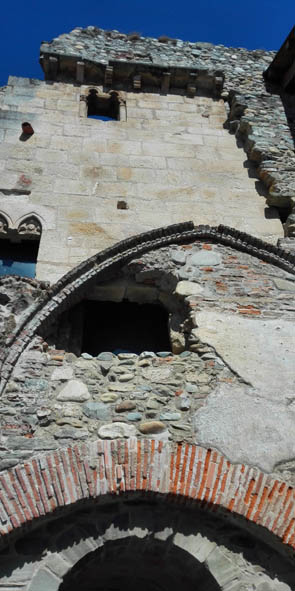Criteria and methods for safeguarding historic masonry to preserve the ‘documentary value’ of monuments from the second half of the 20th century: experience in Spain and Central Europe

In different periods of history, efforts to protect and preserve architectural heritage have aligned with the restoration criteria of the time, with certain values promoted over others. While one trend in architectural conservation caused certain values to be protected, it could neglect or destroy others deemed to be less relevant. As a result, the integrity of buildings was reduced and new trends emerged seeking to remedy these shortcomings, thereby creating an increasingly complex process of architectural conservation.
In addition, safeguarding measures have specific characteristics that can significantly influence any intervention in the monument. These methods can run contrary to the criteria under which they are used, and thus harm the values they were aimed at protecting.
In many cases, insufficient understanding of the features of monuments’ values and the techniques used to protect them can lead to destruction rather than the intended outcome of protection.
On the other hand, according to C. Brandi, in artwork of material substance and image, the first is the mediator of the second. Material substance is again expressed in structure and appearance, two inseparable aspects, as ‘two sides of the same coin’.
Taking this into consideration, it must be observed that many seek interventions to produce an image in a uniform style, where the original matter is removed and replaced with a new one that bears an idealised image, without the traces of time like patina, deformations, etc. Other interventions try to preserve the object/material in its entirety, however these use ‘invisible’ techniques, which are limited to the protection of appearance. The original substance is destroyed and with it the documentary values it contains. The documentary value views the building as the most important document about itself – the witness of past construction and production systems, living habits and so on.
For a monument to retain authenticity, understood as the integrity of all its individual values, the documentary value must be preserved and protected, even though in many cases this is an invisible value that is partly contained in the object’s structure.
The research project is based on the duality of material substance, as defined by C. Brandi. Through this, an analysis is carried out on the impact of different criteria in heritage conservation and safeguarding methods on the documentary values of historic masonry. This will provide important information to facilitate the understanding of the features of these values and lead to selection, development and use of appropriate techniques and criteria that will contribute to the preservation of documentary values.
The dissertation was published under the title Criterios y técnicas de consolidación de fábricas históricas en la preservación de los “valores documentales”del patrimonio arquitectónico hasta finales del S.XX : experiencias centroeuropeas in 2019.
Researcher: Elena Zapatero
